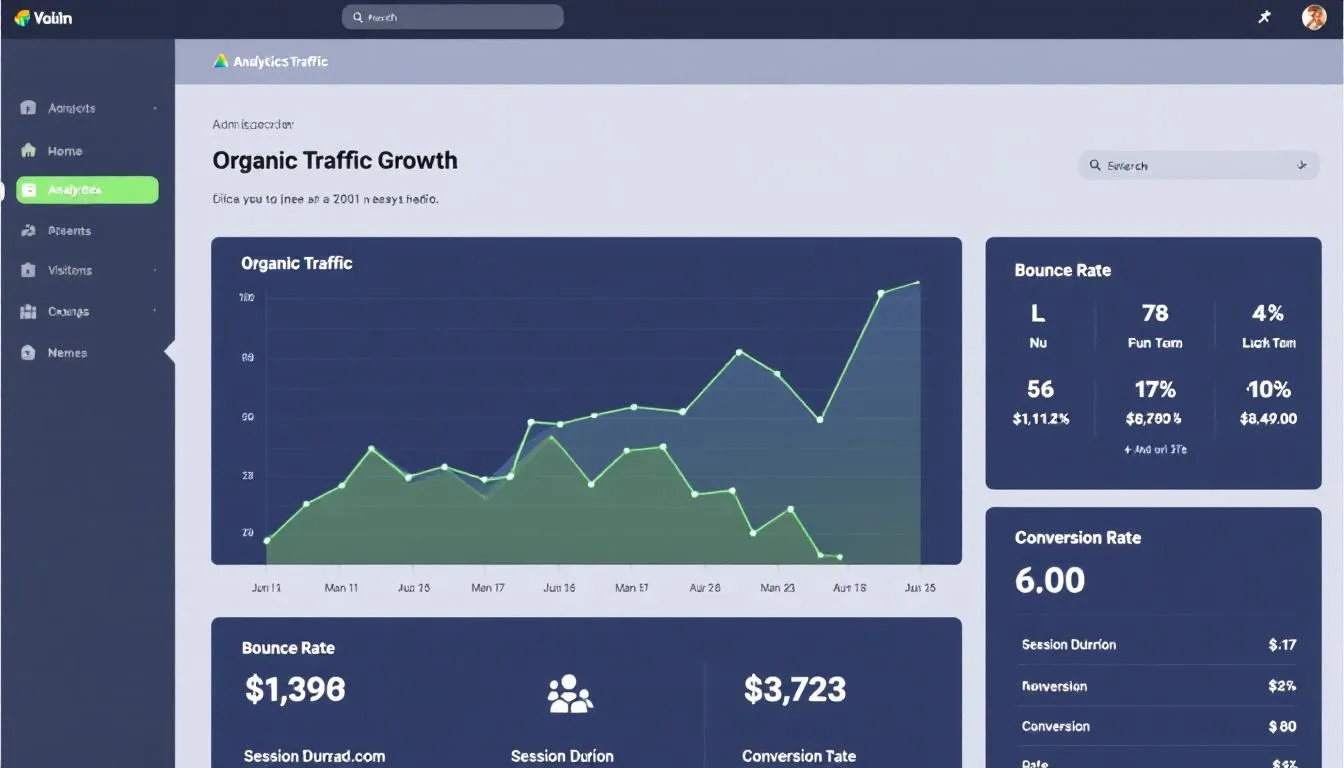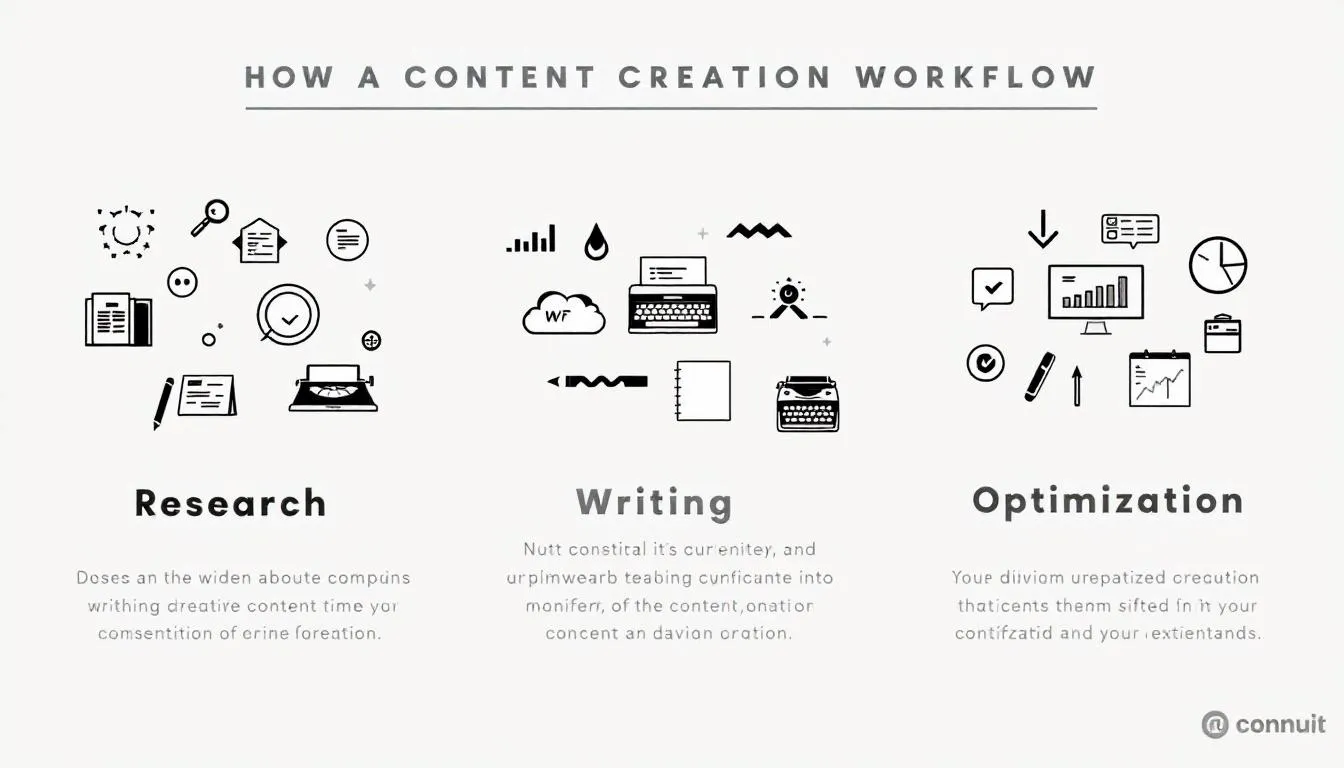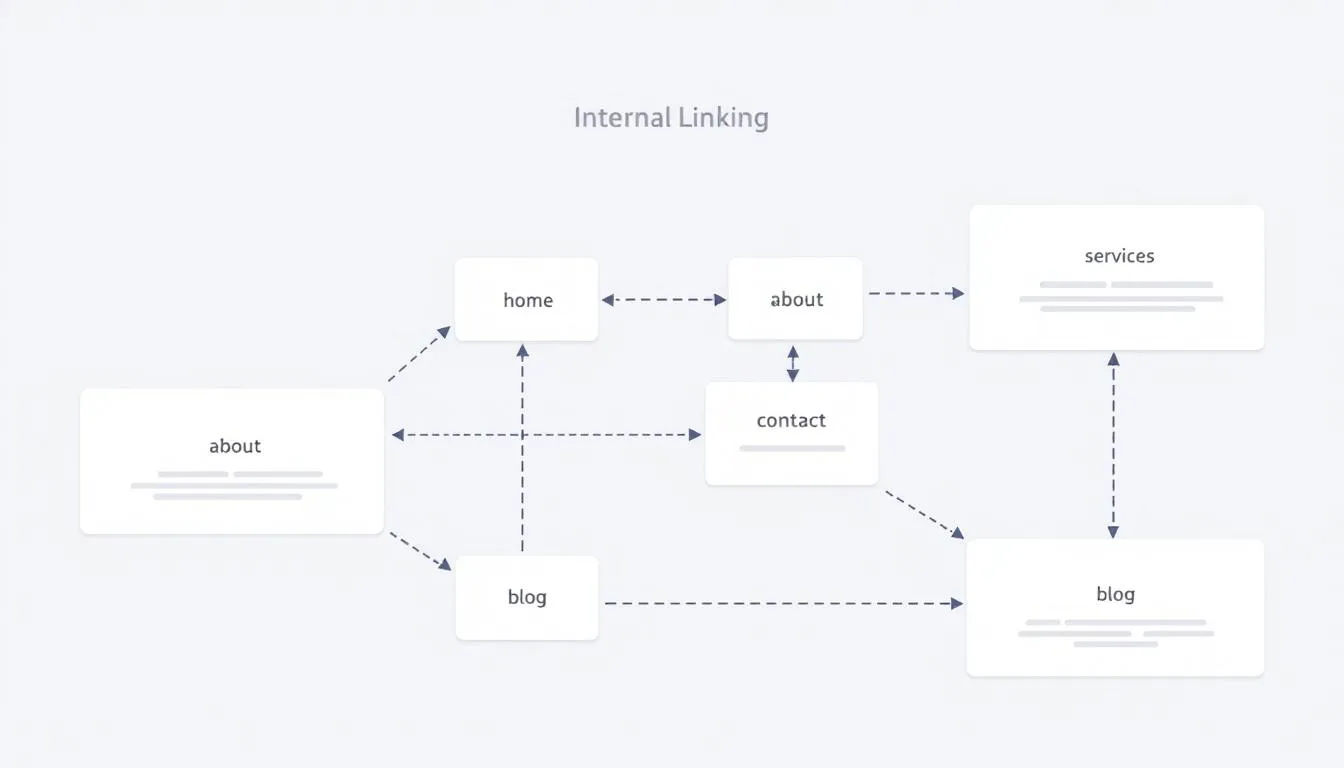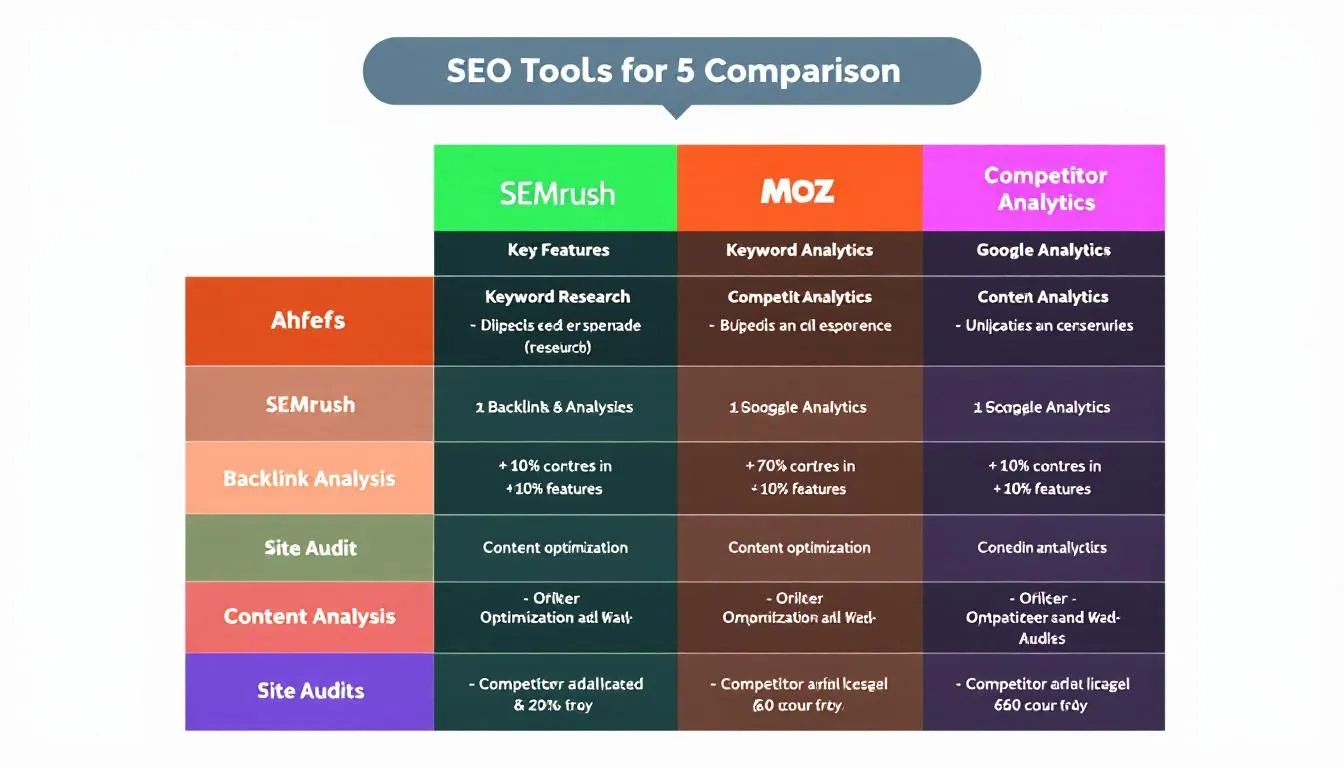Key Takeaways
- Organic traffic accounts for nearly 49% of all website visits and is the most cost-effective way to attract genuinely interested visitors to your site
- Proper keyword research and SEO optimization can increase your organic traffic by 200-300% within 6-12 months when implemented correctly
- AI platforms like ChatGPT and Perplexity are changing organic search, requiring new optimization strategies for featured snippets and AI-generated responses
- Content quality matters more than quantity – Google’s 2023 Helpful Content Update prioritizes expertise, experience, authoritativeness, and trustworthiness (E-E-A-T)
- Technical SEO factors like page speed, mobile optimization, and Core Web Vitals directly impact your organic search rankings and user experience
What is Organic Traffic and Why It Matters
Organic traffic refers to visitors who arrive at your website through unpaid search engine results from platforms like Google, Bing, and DuckDuckGo. Unlike paid advertising where you pay for each click, organic search traffic costs $0 per visitor once you’ve invested in search engine optimization.
The difference between organic traffic and paid advertising extends beyond cost. Organic search traffic demonstrates higher trust levels among users, with studies showing that 70-80% of searchers click on organic results compared to only 20-30% who engage with paid ads. This preference stems from users viewing organically ranked websites as more credible and authoritative.

The statistics surrounding organic traffic reveal its immense value. Research indicates that organic traffic generates 53% of all website traffic and achieves a 14.6% close rate compared to just 1.7% for outbound marketing methods. For context, if a company like eBay wanted to replicate their August 2024 organic traffic through paid campaigns, it would cost approximately $23.2 million monthly.
Long-term benefits of organic traffic include compound growth, where your investment in content and SEO continues paying dividends for months or years. This sustainability makes organic traffic superior for building brand authority and creating predictable customer acquisition channels. Additionally, organic traffic typically delivers better customer lifetime value and retention rates since visitors arrive with genuine intent rather than being interrupted by advertisements.
The credibility factor cannot be overstated. When your website appears prominently in organic search results, it signals to potential customers that search engines consider your content valuable and trustworthy. This implied endorsement from search engines translates into higher conversion rates and stronger brand perception among your target audience.
How to Measure Your Current Organic Traffic
Setting Up Google Analytics 4 for Organic Traffic Tracking
Proper measurement forms the foundation of any successful organic traffic strategy. Google analytics serves as your primary tool for understanding how visitors discover and interact with your website. Setting up Google Analytics 4 requires careful attention to UTM parameter configuration to ensure accurate traffic source attribution.
Begin by creating a new GA4 property and installing the tracking code across all web pages. Configure custom reports that specifically separate organic search traffic from direct traffic and referral traffic. This distinction is crucial because some AI platforms and secure browsing may cause organic visits to appear as direct traffic due to missing HTTP referrer information.
Set up conversion tracking for organic traffic to measure return on investment and goal completions. Define specific actions that matter to your business, such as newsletter signups, product purchases, or contact form submissions. Use audience insights to understand organic visitor demographics, behavior patterns, and conversion paths through your website.
Google Search Console Implementation
Google Search Console provides invaluable data directly from Google about your website’s organic search performance. Verify your website using DNS verification, HTML file upload, or Google Tag Manager methods. DNS verification is recommended as it’s the most reliable and doesn’t require ongoing maintenance.
Understanding Search Console reports is essential for organic traffic growth. The Performance report shows which queries bring visitors to your site, along with impressions, clicks, and average position data. The Coverage report identifies technical issues preventing pages from appearing in search results, while the Core Web Vitals report highlights user experience problems affecting your rankings.
Track keyword rankings for your target terms and monitor click-through rates for different search queries. Identify opportunities where your pages receive high impressions but low clicks, indicating potential for meta description optimization or title tag improvements. Use the Enhancement reports to fix structured data issues and optimize how your content appears in search results.
Baseline Metrics to Track
Establish baseline metrics by analyzing your current organic traffic volume, growth trends, and seasonal patterns from the past 12 months. Understanding these patterns helps set realistic expectations and identify the best times to launch new content or promotional campaigns.
Identify your top-performing pages by organic traffic and analyze their average session duration, bounce rates, and conversion metrics. These high-performing pages provide insights into what content resonates with your audience and can guide future content creation strategies.
Document current keyword rankings for your target terms and identify opportunities for improvement. Track organic traffic conversion rates and revenue attribution to demonstrate business impact. This baseline data becomes crucial for measuring the success of your optimization efforts and justifying continued investment in organic traffic strategies.
Essential SEO Strategies for Organic Traffic Growth
Keyword Research and Strategy
Effective keyword research forms the cornerstone of driving organic traffic to your website. Use comprehensive seo tools like Ahrefs, SEMrush, or the free Google Keyword Planner to identify high-volume, low-competition keywords relevant to your business. Focus on finding the sweet spot between search volume and competition level that matches your website’s current authority.
Long-tail keyword targeting proves especially valuable for newer websites or those in competitive industries. These longer, more specific phrases typically have lower competition and higher conversion rates because they match specific user intent. For example, instead of targeting “digital marketing,” consider “digital marketing strategies for small businesses” which attracts more qualified traffic.
Conduct competitor keyword analysis to identify content gaps and ranking opportunities in your industry. Analyze which keywords your competitors rank for but you don’t, and which content topics drive the most organic search traffic to their websites. This analysis reveals untapped opportunities for your seo strategy.
Implement keyword mapping by assigning specific keywords to individual pages and creating content clusters around related topics. This approach helps build topical authority and improves your chances of ranking for multiple related search terms. Organize your keyword strategy around search intent categories: informational queries (how-to guides), navigational queries (brand searches), commercial queries (product comparisons), and transactional queries (buying intent).
On-Page SEO Optimization
On-page optimization directly impacts how search engines understand and rank your content. Start with title tag optimization, placing your primary keywords within the first 60 characters for maximum SERP visibility. Craft compelling titles that accurately describe your content while encouraging clicks from search results.
Write meta descriptions that include relevant keywords and compelling calls-to-action within 160 characters. While meta descriptions don’t directly impact rankings, they significantly influence click-through rates from search results, which can indirectly boost your organic search traffic.
Structure your content using proper header tag hierarchy (H1, H2, H3) to create clear content organization and strategic keyword placement. Use your primary keyword in the H1 tag and related keywords in H2 and H3 tags to reinforce your content’s topical relevance.
Develop a strategic internal linking approach to distribute page authority throughout your website and improve user navigation. Link to relevant content using descriptive anchor text that includes keywords naturally. This practice helps search engine bots understand your content relationships and keeps visitors engaged longer on your site.
Optimize images with descriptive file names, comprehensive alt text, and modern formats like WebP for faster loading. Image optimization contributes to overall page speed and provides additional opportunities to target relevant keywords through alt text and file names.
Content Marketing for Organic Traffic
Creating High-Quality, Search-Optimized Content
Content quality has become the primary ranking factor following Google’s 2023 Helpful Content Update. Focus on creating comprehensive, in-depth articles that thoroughly cover topics relevant to your audience. For competitive keywords, aim for 2000+ word articles that provide substantial value and demonstrate expertise.
Follow Google’s E-E-A-T guidelines by incorporating author bios, citing credible sources, and demonstrating real-world experience with your topics. Include relevant examples, case studies, and actionable advice that readers can immediately implement. This approach builds trust with both users and search engines.
Plan your content strategy based on thorough keyword research and user search intent analysis. Create content that directly answers user questions and solves real problems. Update existing content regularly to maintain freshness and relevance, as search engines favor recently updated, accurate information.
Structure your content to maximize readability and engagement. Use bullet points, numbered lists, and clear subheadings to break up large blocks of text. Include relevant internal links to keep readers engaged with your website and encourage them to explore additional content.
Content Types That Drive Organic Traffic
Different content types serve various stages of the customer journey and search intents. How-to guides and tutorials perform exceptionally well for informational searches and help establish your website as a reliable source of expertise. These comprehensive guides often attract backlinks from other websites and generate sustained organic search traffic.
Comparison articles and buyer’s guides target commercial intent keywords where users are evaluating different options. These content pieces often have high conversion potential and can drive qualified organic traffic from users ready to make purchasing decisions.
Industry research, data studies, and original surveys create linkable assets that attract natural backlinks from other websites. This type of content demonstrates thought leadership and helps build domain authority, which positively impacts all your pages’ ranking potential.
FAQ pages effectively target voice search queries and long-tail question-based keywords. Structure these pages with clear questions and concise answers that directly address common user concerns. This format aligns well with how people search using voice assistants and ai search engines.
Local content optimization helps capture location-based searches and improves your Google Business Profile visibility. Create location-specific landing pages and content that addresses local market needs and includes relevant geographic keywords.

Content Optimization for Featured Snippets and AI
Structure your content to appear in Google’s featured snippets and AI Overviews, which can significantly increase your organic visibility. Use numbered lists, bullet points, and table formats that search engines can easily extract and display as featured snippets.
Answer questions directly and concisely within the first 100 words of relevant sections. This approach increases your chances of being selected for featured snippets and makes your content more likely to be cited by ai platforms like ChatGPT and Perplexity.
Implement schema markup for FAQ, How-to, and Article structured data to help search engines better understand your content format and purpose. This additional context can improve your chances of appearing in rich results and voice search responses.
Optimize for voice search by incorporating conversational keywords and natural language patterns. Voice searches tend to be longer and more question-based than traditional text searches, so adjust your content to match these patterns.
Technical SEO Optimizations
Website Speed and Core Web Vitals
Technical SEO factors significantly impact your ability to drive traffic to your website through organic search. Google’s Core Web Vitals have become essential ranking factors, with specific benchmarks that websites must meet for optimal performance.
Achieve Largest Contentful Paint (LCP) under 2.5 seconds by optimizing images, implementing content delivery networks (CDN), and minimizing server response times. LCP measures how quickly the largest content element loads, directly affecting user experience and search rankings.
Improve First Input Delay (FID) below 100 milliseconds through JavaScript optimization and browser caching implementation. FID measures interactivity and responsiveness, crucial factors for user engagement and search engine evaluation.
Reduce Cumulative Layout Shift (CLS) under 0.1 by setting proper image dimensions and optimizing font loading procedures. CLS prevents unexpected layout movements that frustrate users and negatively impact search rankings.
Use performance monitoring tools like PageSpeed Insights, GTmetrix, and WebPageTest to regularly assess your website’s speed and identify improvement opportunities. Implement lazy loading for images, minify CSS and JavaScript files, and enable compression to achieve faster page loads.
Mobile Optimization and Responsive Design
Mobile-first indexing means Google primarily crawls and indexes the mobile version of your website. Ensure your responsive design provides optimal viewing experiences across all device sizes and maintains functionality on mobile devices.
Conduct regular mobile usability testing using Google’s Mobile-Friendly Test tool to identify and fix mobile-specific issues. Test touch-friendly navigation, button sizing, and content readability on various mobile devices.
Consider implementing Accelerated Mobile Pages (AMP) for news and blog content to achieve faster mobile loading speeds. While AMP isn’t required for all content types, it can provide competitive advantages for time-sensitive content and news articles.
Optimize mobile user experience by simplifying navigation, reducing pop-ups and interstitials, and ensuring all features work seamlessly on touchscreen devices. Mobile user experience directly impacts bounce rates and engagement metrics that influence search rankings.
Site Architecture and Crawlability
Create and submit XML sitemaps to search engines for complete page discovery and indexing. Include all important pages in your sitemap while excluding duplicate or low-value pages that might waste crawl budget.
Optimize your robots.txt file to guide search engine bots efficiently through your website. Allow access to important content while blocking crawler access to admin areas, duplicate content, and other pages that shouldn’t appear in search results.
Implement clean, descriptive URL structures with keyword-rich slugs that clearly indicate page content. Avoid complex parameters and unnecessary subdirectories that can confuse both users and search engine bots.
Regularly audit and fix crawl errors, broken links, and redirect chains that waste crawl budget and create poor user experiences. Use tools like Screaming Frog SEO Spider to identify technical issues that may prevent search engines from properly accessing your content.
Implement breadcrumb navigation to improve user experience and help search engines understand your website’s hierarchical structure. Breadcrumbs also provide additional internal linking opportunities and can appear in search results.
Building Authority Through Links
Internal Linking Strategy
Strategic internal linking distributes page authority throughout your website and creates topical clusters that demonstrate expertise in specific subject areas. Create pillar pages that serve as comprehensive resources on broad topics, then link to supporting articles that cover related subtopics in detail.
Use descriptive anchor text that includes relevant keywords naturally when linking between pages. Avoid generic phrases like “click here” or “read more” in favor of descriptive text that provides context about the linked page’s content.
Regular internal link audits help identify orphaned pages that lack incoming internal links and missed opportunities to connect related content. Every important page should be accessible within three clicks from your homepage and receive internal links from relevant content.
Create hub pages that serve as central resources linking to related content clusters within your website. These hub pages help users discover additional relevant content and provide search engines with clear signals about your topical expertise.

External Link Building Tactics
External link building remains a crucial factor for improving domain authority and organic search rankings. Focus on earning high-quality backlinks from authoritative websites in your industry through valuable content creation and relationship building.
Guest posting on reputable websites provides opportunities to showcase expertise while earning valuable do-follow backlinks. Research publications that serve your target audience and pitch unique, valuable content ideas that align with their editorial guidelines.
Digital PR campaigns can earn mentions and links from news outlets and industry publications. Create newsworthy content such as original research, industry surveys, or expert commentary on trending topics that journalists and bloggers want to reference.
Resource page link building involves creating valuable tools, guides, and resources that other websites naturally want to link to and reference. Develop comprehensive industry guides, useful tools, or data-driven resources that provide genuine value to your target audience.
Participate in HARO (Help a Reporter Out) to provide expert quotes and insights for journalist queries. This approach can result in high-authority backlinks from major publications while establishing thought leadership in your industry.
Broken link building identifies dead links on relevant websites and suggests your content as replacement resources. This strategy provides value to website owners while creating natural link acquisition opportunities.
Adapting to AI and Modern Search Trends
Optimizing for AI-Powered Search
The rise of ai platforms like ChatGPT, Perplexity, and Google’s AI Overviews is transforming how users discover content and requiring new optimization strategies. These ai systems often cite and reference authoritative content, creating new opportunities for organic visibility.
Create content that ai models can easily cite and reference by providing clear, factual information with proper attribution and sources. Structure your content with definitive statements and data that ai systems can confidently extract and present to users.
Monitor ai traffic by setting up Google Analytics filters to track visits from chatgpt.com, perplexity.ai, and other ai platform referrers. This ai traffic represents a growing segment of organic discovery that requires separate tracking and analysis.
Adapt your content strategy for conversational AI queries by incorporating natural language processing patterns and question-based content structures. AI-powered search tends to favor content that directly answers questions and provides comprehensive information on specific topics.
Track brand mentions in AI responses using specialized tools like Am I On AI and Trakkr to understand how often your content appears in ai-generated responses. This visibility in ai search results can drive significant referral traffic and brand awareness.
Voice Search and Local SEO
Voice search optimization requires focusing on longer, more conversational search queries that mirror natural speech patterns. People use different language when speaking versus typing, so incorporate question-based keywords and natural conversation flows in your content.
Local SEO optimization becomes crucial for capturing “near me” searches and location-based queries that are common in voice search. Optimize your Google Business Profile with complete information, regular updates, and active review management.
Create comprehensive FAQ content that answers common voice search questions related to your industry or business. Structure these answers in conversational language that mirrors how people actually speak and ask questions.
Implement local schema markup to provide search engines with detailed business information including location, hours, contact details, and services. This structured data helps ai assistants and voice search devices provide accurate information about your business.
Focus on featured snippet optimization since voice assistants often read featured snippet content as voice search responses. Structure your content to directly answer questions in the first paragraph and use clear, concise language that translates well to spoken responses.
Tools and Resources for Organic Traffic Growth
Free SEO Tools
Google Search Console serves as the foundational free tool for tracking keyword performance, monitoring technical issues, and understanding how Google views your website. Use it to identify which search queries bring visitors to your site and optimize pages that receive high impressions but low clicks.
Google Analytics 4 provides comprehensive traffic analysis, user behavior insights, and conversion tracking capabilities. Set up custom reports to isolate organic search traffic and understand how these visitors interact with your website compared to other traffic sources.
Google Keyword Planner offers basic keyword research and search volume data directly from Google. While primarily designed for paid advertising, it provides valuable insights into search volume trends and keyword variations for organic optimization.
Ubersuggest’s free tier provides keyword ideas, competitor analysis, and basic SEO metrics. Use it to discover long-tail keyword opportunities and understand the competitive landscape for your target terms.
Google PageSpeed Insights delivers Core Web Vitals assessments and specific performance optimization recommendations. Regular monitoring helps maintain technical SEO standards and identify issues affecting user experience.
Premium SEO Tools Worth the Investment
Ahrefs ($99/month) provides comprehensive backlink analysis, keyword research, and competitor intelligence. Its keyword difficulty scores and SERP analysis features help prioritize optimization efforts and identify realistic ranking opportunities.
SEMrush ($119/month) excels at competitor analysis and position tracking, allowing you to monitor rankings across multiple search engines and geographic locations. Its content gap analysis features reveal keyword opportunities your competitors rank for but you don’t.
Screaming Frog SEO Spider ($149/year) performs technical SEO audits by crawling your entire website and identifying issues like broken links, duplicate content, and missing meta tags. This desktop application provides detailed insights into technical optimization opportunities.
Surfer SEO ($59/month) specializes in content optimization and SERP analysis, providing specific recommendations for improving content relevance and topical coverage. Its content editor helps optimize articles for target keywords while maintaining natural readability.
Enterprise-level platforms like BrightEdge or Conductor offer advanced SEO management and reporting capabilities for larger organizations managing multiple websites or complex optimization campaigns.

Content Creation and Optimization Tools
Clearscope and MarketMuse provide semantic keyword analysis and content optimization recommendations based on top-ranking competitors. These ai tools help identify related terms and concepts to include in your content for better topical relevance.
Grammarly Business improves content quality and readability while maintaining professional tone and clarity. High-quality, error-free content performs better in search results and provides better user experiences.
Canva Pro enables creation of optimized images and visual content that enhance article engagement and social media sharing. Visual content optimization contributes to overall page quality and user experience signals.
WordPress plugins like Yoast SEO or RankMath provide on-page optimization guidance and technical SEO features. These tools simplify meta tag optimization, internal linking, and structured data implementation.
Schema.org markup generators help implement structured data that enhances search result appearances and provides additional context to search engines about your content type and purpose.
Artificial intelligence has fundamentally changed how people discover and consume content online. AI platforms now generate substantial referral traffic as users increasingly turn to conversational interfaces for information discovery. Understanding and optimizing for these ai driven platforms becomes essential for maintaining competitive organic visibility.
Traditional search engines continue evolving their algorithms to better understand user intent and content quality. The emphasis on expertise, experience, authoritativeness, and trustworthiness (E-E-A-T) means that content creators must demonstrate real knowledge and provide genuinely helpful information rather than keyword-stuffed articles.
The integration of AI-powered search features directly into search engine results pages creates new optimization opportunities. Featured snippets, knowledge panels, and AI-generated summaries require different optimization approaches compared to traditional blue link results.
Understanding user behavior changes driven by AI adoption helps inform content strategy decisions. Users increasingly expect immediate, accurate answers to complex questions, requiring content that provides comprehensive information while remaining accessible and actionable.
Monitoring ai traffic sources and user behavior patterns reveals new opportunities for content optimization and audience engagement. Analytics tools must adapt to track these emerging traffic sources and measure their impact on business objectives.
Successful organic traffic growth in 2025 requires balancing traditional SEO best practices with emerging AI optimization strategies. Websites that adapt to these changing search behaviors while maintaining content quality and technical excellence will capture the largest share of organic search traffic.
The compound benefits of organic traffic make it the most sustainable and cost-effective method for attracting genuinely interested website visitors. By implementing comprehensive seo strategies, creating valuable content, and adapting to evolving search technologies, businesses can build lasting organic visibility that drives consistent growth and customer acquisition.
FAQ
How long does it take to see results from organic traffic efforts?
Most websites see initial organic traffic improvements within 3-6 months of implementing comprehensive SEO strategies. However, significant growth typically occurs between 6-12 months, with compound growth continuing beyond that timeframe. New websites may experience longer delays due to the Google sandbox effect, while established sites with existing domain authority can see faster results. Content updates and technical fixes often show results within 2-8 weeks depending on crawl frequency and competition levels. The key is maintaining consistent optimization efforts rather than expecting immediate dramatic increases.
What’s the difference between organic traffic and direct traffic in Google Analytics?
Organic traffic comes from unpaid search engine results with proper referrer data that identifies the search engine source. Direct traffic includes visitors who typed your URL directly into their browser, used bookmarks, or came from sources without proper referrer information. Some AI platform traffic may appear as direct traffic due to missing HTTP referrer headers or privacy protections. Use GA4 filters and UTM parameters to better categorize traffic sources and identify true direct visits versus misattributed organic traffic from secure browsing or AI platforms.
Should I focus on high-volume keywords or long-tail keywords for better organic traffic?
Balance both strategies for optimal results: target approximately 70% long-tail keywords and 30% high-volume keywords. Long-tail keywords (3+ words) typically have lower competition, higher conversion rates, and more specific user intent. High-volume keywords drive more total traffic but are significantly harder to rank for and may have lower purchase intent. Start with long-tail keywords to build topical authority and attract targeted visitors, then gradually work toward more competitive, high-volume terms as your domain authority increases.
How important is social media for organic search traffic?
Social media doesn’t directly impact search rankings but significantly supports organic traffic growth through brand awareness and content amplification. Social signals can increase content visibility, attract natural backlinks from other websites, and drive referral traffic that supplements organic search traffic. Use social media platforms to promote content, build relationships with industry influencers, and create engagement that leads to organic mentions and links. The indirect benefits of social media marketing contribute to overall SEO success through increased brand recognition and content reach.
What’s the impact of AI on traditional organic search traffic?
AI-powered search features like Google’s AI Overviews and ChatGPT may reduce click-through rates for some informational queries by providing answers directly in search results. However, AI also creates new opportunities for content discovery through platforms like Perplexity and conversational search interfaces. Focus on creating comprehensive, authoritative content that AI systems want to cite and reference rather than simply optimizing for traditional keyword rankings. Monitor AI traffic separately using dedicated tracking methods and adapt your content strategy to serve both traditional search users and AI-powered discovery channels.



